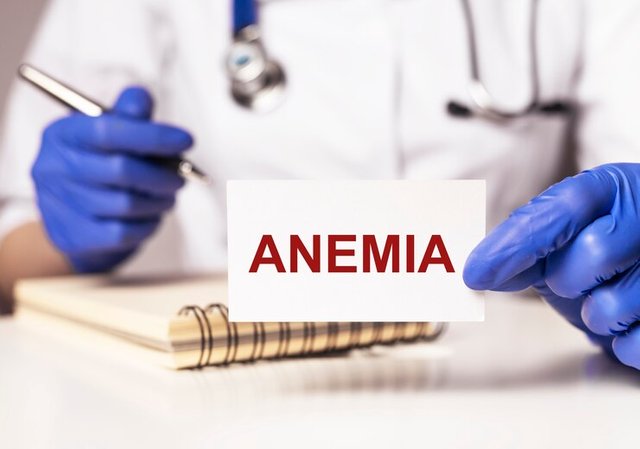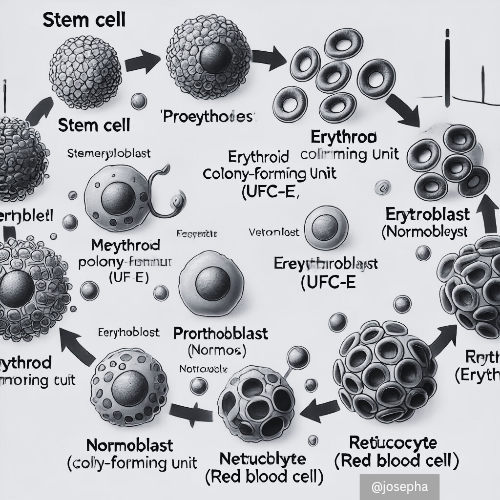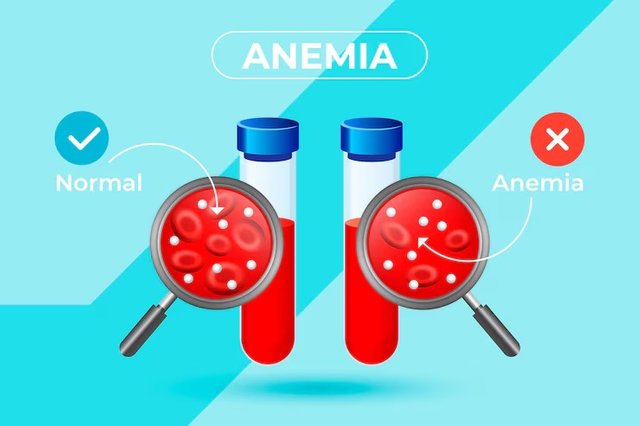SEC S20W4 || Etiopathogenic Anemias - Module 4
Defines Etiopathogenic Anemia (2.5 points)
 |
|---|
To my understanding, Etiopathogenic Anemia refers to anemia which is classified due to its causes such as etiology and due to the mechanisms through which it develops (pathogenesis. The condition whereby several red blood cells or the hemoglobin level in the blood is lower than normal, resulting in less oxygen transport to tissues is what anemia refers to.
Etiology and Pathogenesis are the two components that we will be looking at briefly. The Etiology is the chase of the Anemia that can be; genetic conditions, chronic diseases, nutritional deficiencies, blood loss, and born marrow disorders.
Etiopathogenic Anemia refers to anemia classified based on its causes (etiology) and the mechanisms through which it develops (pathogenesis). Anemia is a condition where the number of red blood cells (RBCs) or the hemoglobin level in the blood is lower than normal, resulting in reduced oxygen transport to tissues.
As for the component of Pathologenesis the mechanism of the Anemia is developed which can involve the following; decreased Red blood cell production, blood loss, and increased Red blood cell destruction. It is good for us to understand the both causes and the mechanism that helps tailor the treatment to quickly address the underlying issue and improve health conditions.
Make a diagram of the maturation of the UFC-E (2.5 points)
The diagram below shows the translation of the maturation process.
 |
|---|
From the above diagram we can see how the process has passed, which begins from Stem cell to Myeloid progenitor to Erythroid. From Colony-forming unit (UFC-E) to Proerythroblast to Erythroblasts to Normobkast to Reticulocyte to Erythrocyte (Red Blood cell). Vitamin B12 and Folic Acid are very important during the process of maturation.
Interpretation in a tabular form
| Stem Cell: | The beginning point, at which a pluripotent hematopoietic Steem cell is capable of differentiating into various blood cells. |
|---|---|
| Me myeloid progenitor cell | From the diagram you can see how the stem cell differentiates into a myeloid progenitor, which can become various types of blood cells |
| Erythroid Colony-forming Unit (UFC-E) | At this point, the myeloid progenitor develops into the erythroid Colony-forming unit, which is ready to become an Erythrocyte. |
| Proerythroblast | This stage is the first recognizable precursor in red blood cell development |
| Erythroblast | It becomes an erythroblast as the cell become matures |
| Normobkast | This is a continuous stage in which the tg nucleus begins to condense and eventually gets rejected from the cell as it is prepared for the final stage. |
| Erythrocyte (Red Blood Cell) | This is the final stage, which is a stage of maturity of red blood cells (Erythrocyte) which are in control of transporting oxygen. |
A Regenerative Anemia vs Non-Regenerative Anemia (2.5 points)
 |
|---|
The two seem to have some mix-up that often confuses people as both refer to regenerative anemia. Here, I have clarified their differences.
Regenerative Anemia
Regenerative anemia is the anemia that occurs (happen) when the bone marrow of someone responds appropriately to the decreased number of red blood cells by producing and releasing more reticulocytes in the bloodstream. Reticulocytes here means immature red blood cells.
The main feature of regenerative anemia is that a high reticulocyte count is observed, indicating that a person's bone marrow is actively trying to compensate for the anemia. Blood loss and hemolysis are the main causes of regenerative anemia.
Non-regenerative Anemia
Non-regenerative Anemia occurs (happen) when the bone marrow of someone fails (can't) produce enough new red blood cells even though the person's body is experiencing anemia.
The main feature is having a low reticulocyte count, indicating that the bone marrow isn't responding properly to the decreased Red blood cell levels. Bone marrow failure, nutritional deficiencies, and chronic diseases are the main causes of Non-regenerative Anemia.
Give suggestions in case of bleeding (2.5 points)
My suggestion is that it would be good to visit a medical personnel such as doctor if bleeding is very severe, be it internal bleeding or external bleeding due to broken skin. Also, if bleeding continuous it would be nice to tie the affected part that is bleeding in case of where going to see a doctor is far. My suggestion also is that supplements like vitamin B12 and folic acid should be giving to the affected person to correct the maturation of the new blood cells.
I am inviting: @dove11, @simonnwigwe, and @ruthjoe
Cc:-
@dexsyluz
Greetings dear @josepha ,
In the post on Anemia, you have described very nicely and the suggestions you have given are really nice we must keep the affected area closed to stop bleeding. We go to the doctor only when we have a disease, anemia is also a disease, where vitamin deficiency is a disease, we should not take any medicine without the doctor's advice because Dr. knows how many medicines or vitamins we need.
0.00 SBD,
0.22 STEEM,
0.22 SP
Thank you so much for your support. I really appreciate.
A detailed post on this lesson. I also agree with you that when the bleeding is severe then without wasting time we should take him/her to a nearby hospital. Privious day one of our aunt's finger was accidently injured and stared bleeding (Very little ammount) I immediately tie her finger with a fresh, clean cotton cloth. It helps her a lot. Now she is okay. Good luck to you.
0.00 SBD,
0.19 STEEM,
0.19 SP
Thank you for your support.
Upvoted. Thank You for sending some of your rewards to @null. It will make Steem stronger.